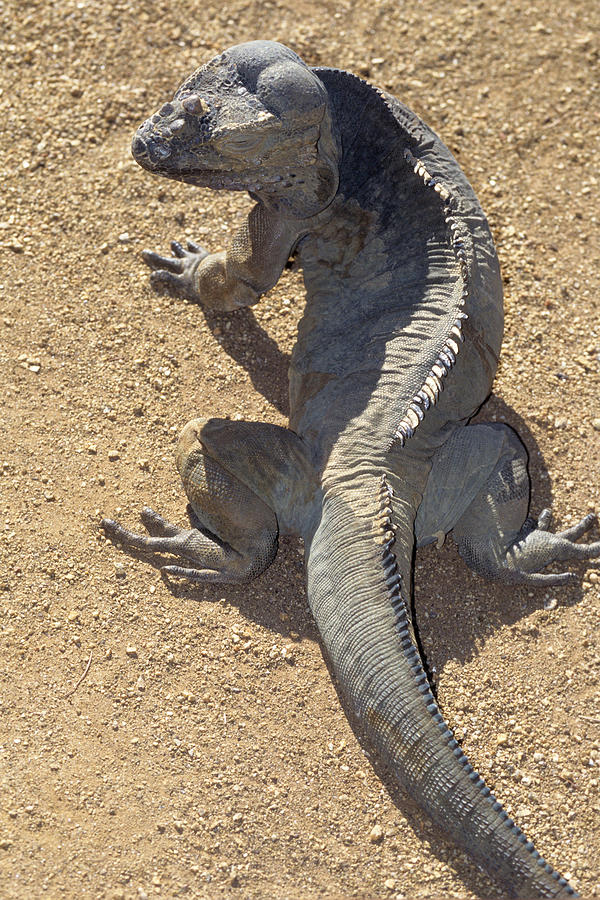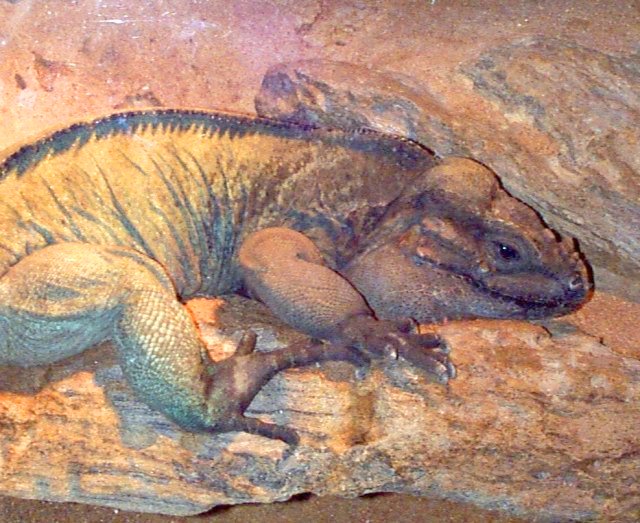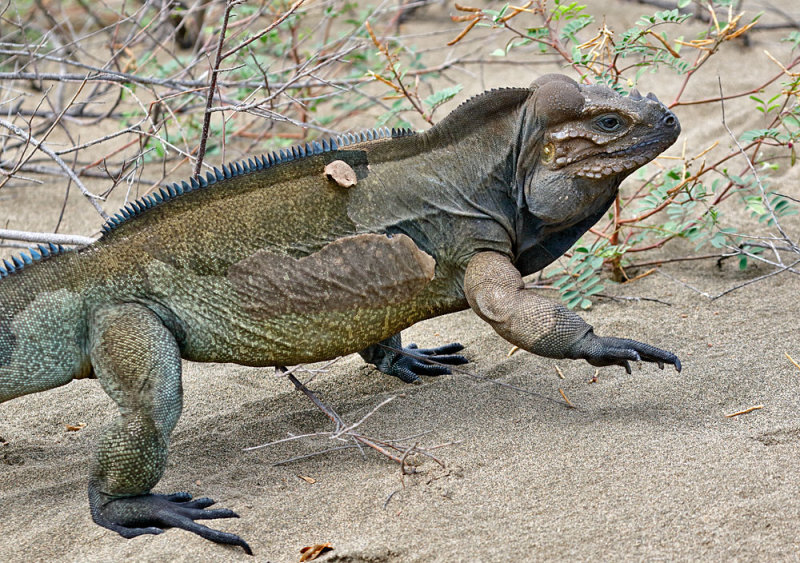
domestic dogs ( Canis lupus familiaris)Ĭyclura cornuta has been documented to feed on fruits.These defenses don't work very well against introduced predators. As discussed above, these include elaborate head and neck movements intended to make the lizard look larger and more fierce. This species also exhibits behaviors which are thought to deter predators as well as competitors. cornuta allows it to blend in with its environment. a fruiting bush) will actively defend it from conspecifics (Animal Network). Young iguanas in particular may take insects and other small animals. They occasionally eat animal food, mainly insects, land crabs, or carrion (especially dead birds and fish). Rhinoceros iguanas are mainly herbivores, eating a wide variety of leaves, fruits, flowers, and seeds. cornuta have a variable diet both seasonally and ontogenetically. The aggressive displays that accompany mate guarding and territoriality have been discussed above (Hunsaker, et al. Most of the documented behavior unique to C. When kept as a pet, it is often necessary to provide this species with an auxillary source of heat (such as a lamp) as many homes are kept below the appropriate temperature (Houston Zoo). It also means that there are some obvious habitat restrictions for this animal-it can only survive in tropical or sub-tropical climates in the wild. This means that they must adjust their activity patterns to utilize solar radiation so as to regulate their body temperature. Status: captivity 16.7 years Max Planck Institute for Demographic Research A life of 20 years in captivity is reported (Hamlett 2002), and some researchers predict that these animals may live decades long than that in the wild (Kaplan 2002, citing Blair). Very little has been published regarding the longevity of this species because it is difficult to monitor in the wild. Blair at Cyclura Research Information Collection). Once females have laid their eggs, they sometimes guard the nest for a few weeks to prevent egg predation (D. There is no male parental care this species. Range age at sexual or reproductive maturity (male) 5 to 9 years.Range age at sexual or reproductive maturity (female) 5 to 9 years.Resource competition and/ or abundance of predators is thought to account for variations in egg-laying behavior(Hunsaker II, et al. Clutch size is extremely variable and may range from 5 to 20 eggs. Females dig burrows up to a meter and a half long in which to incubate the eggs and must keep them at a minimum of 30 degrees Celsius.

cornuta is oviparous, so eggs are laid about 40 days after mating, usually in early August. The beginning of the mating season is late May, and C. They use similar motions to attract females, and may also use these head bobs and nods to scare away predators (Hunsaker II, et al.

cornuta appears to be extremely territorial and males especially will attempt to dominate and intimidate conspecifics with head movements and body gyrations. ReproductionĮvidence for a polygynous mating system with social rank determining matings has been published. They mature at 5 to 9 years of age ( 2002). These iguanas hatch from eggs and are independent after hatching. Males are larger than females and have relatively larger horns as well (Hamlett 2002, 2002). These horns are the source for the name for of the species. The species is definitively identied by the large size of certain scales on the head, but few other iguana species are as large or have the "horns" (actually enlarged scales) on their heads. cornuta has rough epidermal scales and is grayish brown or olive in color. It has been displaced from much of its original range on Hispaniola by habitat destruction and introduced predators (Hamlett 2002, 2002) Cyclura cornuta is typically found in regions where the annual mean temperature is at least 27 degrees Celsius. This species requires warm temperatures and lots of solar radiation. This species is primarily found near coastlines, however, human expansion has forced many populations to retreat further inland. Iguanas exhibit a considerable amount of plasticity in their habitat selection and C. Mostly small trees and shrubs, cacti, and mesquite may surround the burrows that C.

This biome receives very little rain annually and the plants and animals which occupy it reflect the sun-drenched, arid environment. cornuta is typically described as dry forest, scrub, or desert. There is a living subspecies on Mona Island, near Puerto Rico. A closely related species or subspecies (scientific opinions vary) was found on Navassa Island, but is now believed extinct. Cyclura cornuta is found only on the island of Hispaniola in the Caribbean Sea (Hamlett 2002).


 0 kommentar(er)
0 kommentar(er)
